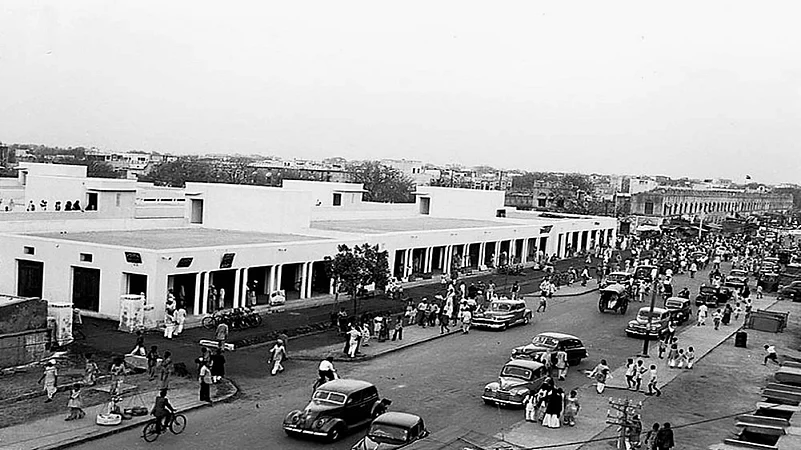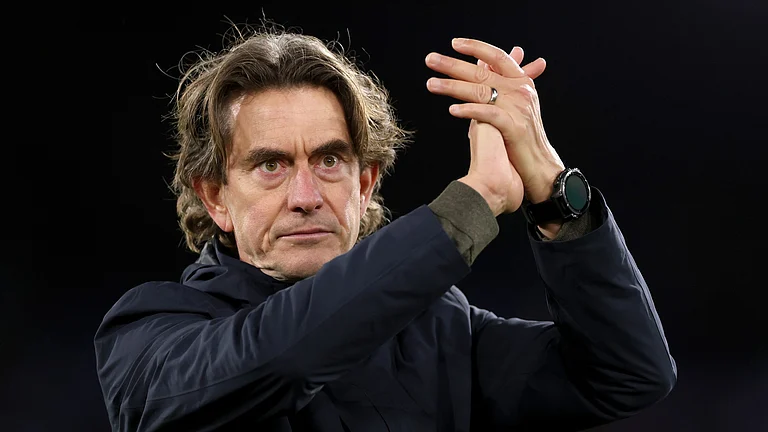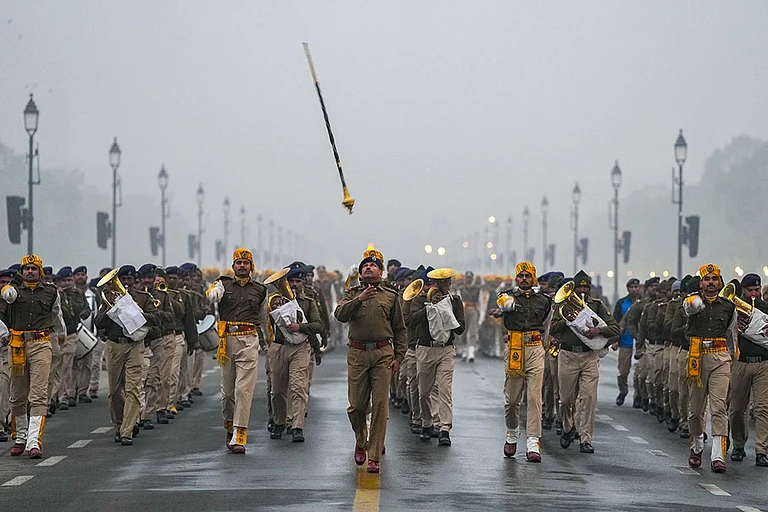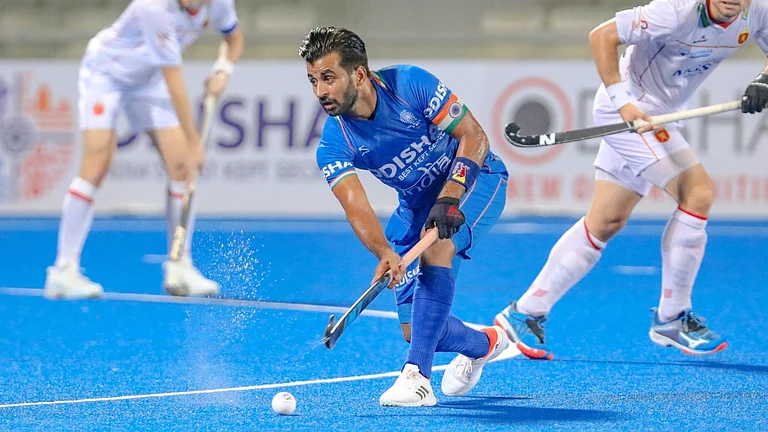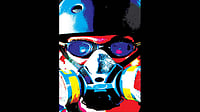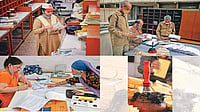It was near-perfect time to enter a business. In the 1990s, Samir Modi, the third-generation member of the Delhi-based Modi clan, which was among the wealthiest families in the previous decade, joined his father’s business. At that moment, he could reflect on the deficiencies of the country’s socialist past, and be animated by the possibilities of a capitalist future. Within the extended family, in the late 1980s, he saw family members and his father K.K. Modi battle endlessly and publicly over the control of the once-sprawling empire. Many of them lost out in the bargain, but KK survived after fractious splits. Over a decade later, Samir’s brother Lalit fell from the heights of the sporting (IPL) pulpit, and ran away from India to escape arrest.
As far as the group’s businesses went, by the 1990s, the Modi family was no longer a force in traditional areas such as textiles, chemicals, cigarettes, and tyres. A few members entered new sunrise areas like telecom and aviation with mixed results. However, Samir spearheaded the KK faction’s forays away from cigarettes and into retail chains (24Seven) and direct-selling (Modicare). In many ways, this diversification marked India’s transition from a controlled economy into a liberalised one. More importantly, it indicated the beginning of a new era, in which consumers, rather than companies, were critical. Reforms let loose the pent-up demand among buyers, who wanted affordable choices in goods and services.
This is why Samir confides that businesspersons of his generation had an overriding advantage over the previous two—the former found a “connect” between their brands and companies, and the consumers. The emergence of a vibrant, strong and growing middle class meant that the buyers had opinions about what they desired to purchase. They were no longer satisfied with what was available in the local markets; they were desperate for what was being hawked globally. They wanted products of world-class quality, and at prices that suited their pockets. The middle class had larger disposable incomes; they wanted to spend it both lavishly and judiciously. Thus, the 1990s were “challenging” times for entrepreneurs.
Consider some statistics to get a feel of this change. Per capita consumer spending grew by four-and-a-half times, from $267 in 1961 to $1,222 in 2019. India’s retail sector, states a 2020 report by Forrester Research, is estimated at $883 billion, and grocery accounts for more than $600 billion. Another consultancy, Deloitte India, considers India the third largest retail mart in Asia, and the fourth largest in the world, after the US, China, and Japan. By 2024, the retail market will cross the $1.3-trillion mark. In the same year, e-commerce will rise by 84 per cent from the existing figure, and increase to $111 billion. Mobile shopping is expected to grow by a 21 per cent annually over the next four years. Inline retail penetration will be around 11 per cent by 2024.
By 2030, India may become the world’s largest consumer market. More reforms, higher per capita incomes, and growing disposable earnings and discretionary spend by certain sections, will spur demand. If the country, which is among the fastest-growing economies today, manages to put the pandemic crisis behind and grow at the same pace or faster, it will create yet another consumer revolution, the kind of which we saw in the 1990s and 2000s. This presents immense investment and business opportunities for this generation (Samir’s), and the next one (that of his children, nieces, and nephews).

Delhi’s Gaffar Market, Karol Bagh in 2021
Samir’s current corporate philosophy, ‘Soch badlo, khudko badlo, duniya badlo (Change your thinking, change yourself, change the world)” succinctly captures this future potential. Indian consumers, who witnessed upheavals of the past three decades, are well-positioned to instigate a new revolution within their brains, and in the external environment. It echoes in the next generation’s possible responses. Samir’s eldest daughter wants to become a Bollywood star, not a businessperson. His younger daughter studies overseas, and hasn’t decided which area she will venture into over the next few years. They have independent ambitions.
ALSO READ: When Liberalisation Freed India Inc
So did Samir when he was in his twenties. After returning from the US, he realised that both the country’s customers and marketplace were in the throes of tectonic shifts. Economic reforms, which led to a plethora of foreign and national brands becoming easily available off the shelves, pushed and pulled the buyers towards ever-growing options. No longer were the latter satisfied with a single brand or unbranded products. Their hearts wanted more, which was epitomised by a popular ad slogan of a foreign soft drink manufacturer, ‘Yeh dil maange more’.
During his frequent overseas travels in the beginning of this century, Samir visited several 24x7 shops—one-stop stores that catered to the needs of the people throughout the day and night. He introduced the same concept in India in 2005, and addicted the customers to a new culture where they could buy most things round-the-clock. “You have to be a keen observer to see what the consumer will need in the near future, and catch the possible trends early. A decade ago, the acceptance of new concepts and ideas took more time compared to what happens today. Now, trends, products and brands go viral. Social media changed the consumer sector,” he says.

Bakers and confectioners Nahoum’s in New Market, established in 1902, continues to have a loyal clientele.
Way back in 1994, when studies on consumer behaviour in India were rare, Alladi Venkatesh from the University of California neatly summed up the reasons why consumerism and retail would take off, and engulf society. In his study, he pinpoints 13 factors that would influence the buying decisions over the next decade or two. Obviously, these included the burgeoning middle class, and the pent-up demand from the period of state-driven socialism. As nuclear families—whose numbers kept growing as people kept migrating from villages and towns to the metros—became an accepted norm in urban India, and women stepped out to embrace the emerging employment opportunities, buying habits went through a churn.
Across classes and castes, aspirations of consumers rose and their expectations changed. From spending their savings on assets, they began chasing goods worth lakhs of rupees, often in cash. This was aided by the credit culture, as loans became easy, and were payable in EMIs over years. New types of shopping environments and outlets opened, giving unique experiences to the consumers. The consumerism was abetted by media proliferation, and the huge number of cable and satellite homes. Indians now saw what was happening globally, and wanted their lives to change in similar ways.
One of the first mall experiences we had, at least in the national capital, was Ansal Plaza in the 1990s, along with others like Crossroads in Mumbai and Spencer Plaza in Chennai. It was a new thing—large in-house stores inside an air-conditioned building. Nitin Gupta, a Delhi resident, remembers his first visit to Ansal Plaza as a teenager. “It was an exhilarating experience for the family. My father, who was with us, warned not to touch anything as the products were beyond our means. Today, everyone and anyone, from most economic classes, can visit the malls.” In his book, It Happened In India (2007), Kishore Biyani, Founder, Future Group, wrote how villagers thronged the supermarkets and hypermarkets, and purchased goods worth lakhs of rupees in cash.

“The emergence of well-travelled Indian consumer—overseas workers, tourists and professionals—and their exposure to worldwide consumer products, growth of a strong domestic consumer goods manufacturing, resurfacing of hedonistic cultural elements after centuries of dormancy, entry of multinational corporations into India and emergence of rural consumer sector,” says Venkatesh, all contributed to the rise of the consumerist society. He adds that the “global diffusion of consumerism has been aided by the expansion of multinationals, diffusion of telecommunication and satellite technologies, general dissatisfaction with socialist political regimes, and rising economic success of East Asian countries.”

Such encounters with the marketplace were vastly different from the earlier decades. Between the 1950s and 1970s, the Indian consumers’ interactions with retail were simple. “There was minimal concept of individual brands in the 1960s and 1970s. You went to the market, and asked for a product. In most cases, there were gunny bags, especially for groceries. The shopkeeper displayed a few generic varieties and you chose from them. For example, the only distinguishing factor between the flour and rice varieties were not the brand names, but the names of the mills,” explains Pushpavati Kashyap, 90. Supplies were limited, it was a sellers’ market, prices were fixed and high, and quality was questionable.
Her son, Rajeev, who retired from the Indian Navy adds, “During the 1980s, we were exposed to door-to-door salespeople, who brought the products to your doorsteps. Since most of women were homemakers, and stayed at home, they were entrusted with the responsibility of dealing with this sales force. I remember that when we stayed in the government quarters in Delhi’s RK Puram (which still exists), women were the main decision-makers. Quantity, in those days, was more important for the buyers, and quality was compromised. Families were big, and incomes limited.”
Cut to the future. If we need to make some predictions about how consumer behaviour and retail experiences will change over the next decade or so, consider these current indicators. One of the major beverage-makers recently launched in-store display systems with personalised messaging for approaching customers based on their smart phones’ data. The feature works on cloud technology, and enhances the shoppers’ flexibility to choose. It leverages the built-in features of a smart mobile, and links with beacon technology to interpret and analyse the buying preferences and habits of a customer.

Some of us are acquainted with Augmented Reality (AR) and Virtual Reality (VR). They allow you to walk into an apparel store, choose the attire you like through a virtual inventory, enter the trial room, and try them out in a virtual mirror. You don’t need to physically wear the clothes. Similarly, several companies are experimenting with regular alerts to potential consumers through beacons, which are small battery-operated wireless devices to transmit coded messages to paired smartphones using Bluetooth Low Energy. In addition, automated product deliveries at your doorsteps, smart shopping carts, self-checkouts and touchless commerce through contactless payments will be available at the malls.
While they may sound fanciful and futuristic, they are definite possibilities. What is of more relevance—and this is something experts have grappled for decades—is to quantify the number of potential consumers. Since the late 1980s, we have been unable to fix the size of India’s middle class. In 1989-90, NCAER, a think tank, claimed that 40 per cent of the population comprised the middle and rich classes. As per the 1991 Census, India’s population was 850 million, and the NCAER figure translated into almost 350 million. In 1995-96, the figure climbed to an unbelievable 80 per cent, almost 700 million.
Of course, NCAER statistics came with a disclaimer. Among the consumers, almost 27 per cent of the population in both cases, were categorised as low-income group, which wasn’t poor but was also not the consuming class. Thus, the figures needed to be reduced. Still, the numbers were impressive. In her book, We Are Like This Only (2008), marketing expert and consultant Rama Bijapurkar writes, “The story put out was that there was a sleeping beauty called Middle Class India, comprising 250 to 300 million, who had money and a burning desire to consume, and nothing decent to buy.”
As the decades rolled on, the statistics became realistic. But they remained inconsistent. Credit Suisse Global Wealth Report (2015) estimated the size of the middle class at a mere 25 million, and The Economist (2018) calculated it to be 78 million, or three times higher. Yet, there were some, like the 2017 piece in the Economic and Political Weekly, which agreed with the optimistic NCAER estimates, and maintained that the figure was a huge 600 million. One can easily deduce that the numbers varied on the basis of the researchers’ methodologies, and their basic assumptions.
Biyani possibly got it right in his book. He said that India is made up of three broad sections: India One (consuming class), India Two (serving class), and India Three (struggling or dependent class). The first includes those who are rich and well-to-do, and can afford assets like houses, cars, and pay EMIs to buy goods and afford services. The second constitutes people who are aspirers and strugglers; they wish to become a part of the middle class. The third is made up of the poor. In the ever-changing socio-economic stirring, a substantial percentage of India Three can join India Two, which has happened in the past as the number of poor radically declined. However, India One never pays India Two enough to make the upward transition.
Hence, although theoretically the middle class grows, with more individuals closeted in India Two, the number of consumers of crucial and expensive assets remains limited, and grows more slowly. For the country to truly emerge as a westernised consumerist society, India Two has to gate-crash into India One’s parties, and without any hangovers.
(This appeared in the print edition as "Up The Mall Road")
ALSO READ






